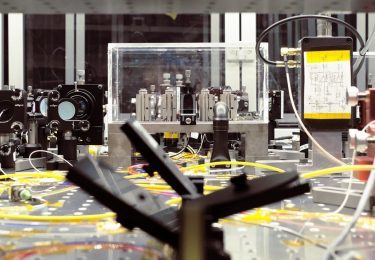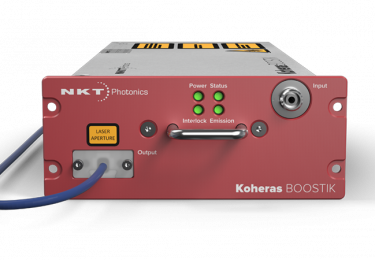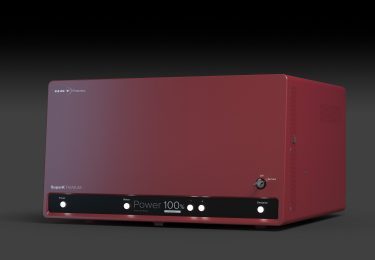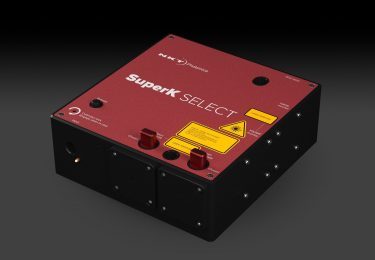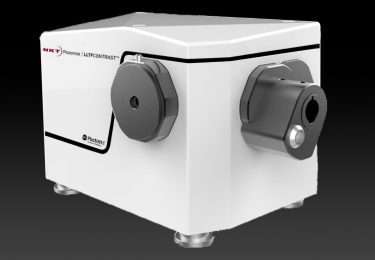Typical examples are tiny single photonic components such as complex nano-waveguides, nano-apertures, and nano-resonators. Tight localization is of great practical importance, e.g. for high-resolution inspection, local modification of materials, high field concentration, intensity enhancement, increase of efficiency of nonlinear processes such as Raman scattering, and harmonic generation.
Nanoparticles of semiconductor materials arranged in bandgaps are called quantum dots. A quantum dot (QD) is a nanocrystal made of semiconductor materials that are small enough to exhibit quantum mechanical properties. Quantum dots are used in applications like solar cells, LEDs, and contrast agents in bio-imaging.
Publications
- Near-Infrared Light Irradiation of Porphyrin-Modified Gold Nanoparticles Promotes Cancer-Cell-Specific Cytotoxicity by Hiromi Kurokawa, Atsushi Taninaka, Toru Yoshitomi, Hidemi Shigekawa, Hirofumi Matsui published in Molecules, 2022.
- Self-assembly, stability, and photoresponse of PbS quantum dot films capped with mixed halide perovskite ligands by Samaneh Aynehband, Maryam Mohammadi, Rana Poushimin, Mahdi Hasanzadeh Azar, Jean-Michel Nunzi, Abdolreza Simchi published in Materials Research Bulletin, 2022
- Mechanistic insight into deep holes from interband transitions in Palladium nanoparticle photocatalysts by Pin Lyu, Randy Espinoza, Md. Imran Khan, William C. Spaller, Sayantani Ghosh, Son C. Nguyen published in Science Direct, 2022.
- Plasmon-induced near-infrared fluorescence enhancement of single-walled carbon nanotubes by Amirmostafa Amirjani, Ted V. Tsoulos, Sayyed Hashem Sajjadi, Alessandra Antonucci, Shang-Jung Wu, Giulia Tagliabue, Davoud Fatmehsari Haghshenas, Ardemis A. Boghossian published in Science Direct, 2022.
- Hyperspectral Counting of Multiplexed Nanoparticle Emitters in Single Cells and Organelles by Prakrit V. Jena, Mitchell Gravely, Christian Cupo, Mohammad Moein Safaee, Daniel Roxbury, Daniel A. Heller published in ACS Nano, 2022.
- Electron–Hole Binding Governs Carrier Transport in Halide Perovskite Nanocrystal Thin Films by Michael F. Lichtenegger, Jan Drewniok, Andreas Bornschlegl, Carola Lampe, Andreas Singldinger, Nina A. Henke, Alexander S. Urban published in ACS Nano, 2022.
- Dielectric encapsulations suitable for applications in quantum technologies by Abhinav Kala and Venu Gopal Achanta published in The European Physical Journal Special Topics, 2022.
- Electroluminescence from Single-Walled Carbon Nanotubes with Quantum Defects by Min-Ken Li, Adnan Riaz, Martina Wederhake, Karin Fink, Avishek Saha, Simone Dehm, Xiaowei He, Friedrich Schöppler, Manfred M. Kappes, Han Htoon, Valentin N. Popov, Stephen K. Doorn, Tobias Hertel, Frank Hennrich, Ralph Krupke published in ACS Nano, 2022.
- Label-free nanofluidic scattering microscopy of size and mass of single diffusing molecules and nanoparticles by Barbora Špačková, Henrik Klein Moberg, Joachim Fritzsche, Johan Tenghamn, Gustaf Sjösten, Hana Šípová-Jungová, David Albinsson, Quentin Lubart, Daniel van Leeuwen, Fredrik Westerlund, Daniel Midtvedt, Elin K. Esbjörner, Mikael Käll, Giovanni Volpe, Christoph Langhammer published in Nature Methods, 2022.
- Microscopic Proof of Photoluminescence from Mechanochemically Synthesized 1‑Octene-Capped Quantum-Confined Silicon Nanoparticles: Implications for Light-Emission Applications by Ankit Goyal, Marco van der Laan, Alessandro Troglia, Min Lin, Harshal Agarwal, Jorik van de Groep, Roland Bliem, Jos M. J. Paulusse, Peter Schall, Katerina Dohnalova published in ACS Omega, 2022.
- Structural Order of the Molecular Adlayer Impacts the Stability of Nanoparticle-on-Mirror Plasmonic Cavities by Aqeel Ahmed, Karla Banjac, Sachin S. Verlekar, Fernando P. Cometto, Magalí Lingenfelder, Christophe Galland published in ACS Photonics, 2021.
- Microbubble resonators for scattering-free absorption spectroscopy of nanoparticles by Gabriele Frigenti, Lucia Cavigli, Fulvio Ratto, Sonia Centi, Tatyana V. Murzina, Daniele Farnesi, Stefano Pelli, Silvia Soria, Gualtiero Nunzi Conti published in Optics Express, 2021.
- Surface-Enhanced Raman Scattering and Surface-Enhanced Infrared Absorption by Plasmon Polaritons in Three-Dimensional Nanoparticle Supercrystals by Niclas S. Mueller, Emanuel Pfitzner, Yu Okamura, Georgy Gordeev, Patryk Kusch, Holger Lange, Joachim Heberle, Florian Schulz, Stephanie Reich published in ACS Nano, 2021.
- A Closer Look at Photonic Nanojets in Reflection Mode: Control of Standing Wave Modulation by Ksenia A. Sergeeva, Alexander A. Sergeev, Oleg V. Minin, and Igor V. Minin published in Photonics, 2021.
- Development of colloidal quantum dot and lead halide perovskite light emitting devices thesis by Sihan Xie, Ph.D., Massachusetts Institute of Technology, 2021.
- Spaser Nanoparticles for Ultranarrow Bandwidth STED Super‐Resolution Imaging by Zhaoshuai Gao, Jian‐Hua Wang, Pei Song, Bin Kang, Jing‐Juan Xu, and Hong‐Yuan Chen published in Advanced Materials, 2020.
- Antimicrobial activity of graphene oxide quantum dots: impacts of chemical reduction by Mauricio D. Rojas-Andrade, Tuan Anh Nguyen, William P. Mistler, Juan Armas, Jia En Lu, Graham Roseman, William R. Hollingsworth, Forrest Nichols, Glenn L. Millhauser, Alexander Ayzner, Chad Saltikov, and Shaowei Chen published in Nanoscale Advances, 2020.
- Quantum-confined stark effect in the ensemble of phase-pure CdSe/CdS quantum dots by Lei Zhang, Bihu Lv, Hongyu Yang, Ruilin Xu, Xiaoyong Wang, Min Xiao, Yiping Cui, and Jiayu Zhang published in Nanoscale, 2019.
- Research on Optical Properties of Tapered Optical Fibers with Liquid Crystal Cladding Doped with Gold Nanoparticles by Joanna E. Moś, Joanna Korec, Karol A. Stasiewicz, Bartłomiej Jankiewicz, Bartosz Bartosewicz, and Leszek R. Jaroszewicz published in Crystals, 2019.
- Broadband laser-tuned whispering gallery mode in a micro-structured fiber embedded with iron oxide nanoparticles by Ming Deng, Yufan Wang, LeiGuang Liu, and Maoru Qin published in Applied Optics 2018.
ARTICLES AND BACKGROUND INFO
- Article by S. Patskovsky, E. Bergeron, M. Meunier from the journal BioPhotonicsHyperspectral darkfield microscopy of PEGylated gold nanoparticles targeting CD44-expressing cancer cells
- Article by N. Fairbairn, A. Christofidou, A.G. Kanaras, T.A. Newman and O.L. Muskens from the journal BioPhotonics: Hyperspectral darkfield microscopy of single hollow gold nanoparticles for biomedical applications
- Article by S. Patskovsky, E. Bergeron, D. Rioux, and M. Meunier from the journal BioPhotonics: Wide-field hyperspectral 3D imaging of functionalized gold nanoparticles targeting cancer cells by reflected light microscopy
- Article by Mark L. Brongersma from the Nature Materials: Optical Fano resonance of an individual semiconductor nanostructure
- Article by Mark L. Brongersma from Nano Letters: Hot-Electron Photodetection with a Plasmonic Nanostripe Antenna



